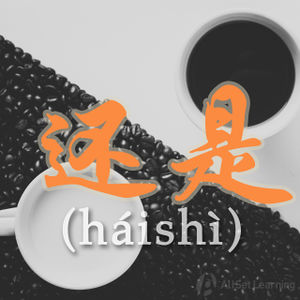Difference between revisions of "Continuation with "hai""
m (Text replace - "Adjectives and Adverbs" to "Adverbs with Adjectives") |
|||
| Line 17: | Line 17: | ||
* 他 <em>还</em> 在 看 书。 | * 他 <em>还</em> 在 看 书。 | ||
| − | |||
* 现在 <em>还</em> 早。 | * 现在 <em>还</em> 早。 | ||
| + | * 你们 <em>还</em> 小。 | ||
| + | * 你 <em>还</em> 在 喝 酒? | ||
</div> | </div> | ||
Revision as of 07:35, 14 August 2012
-
Level
-
Similar to
-
Used for
-
Keywords
Structure
还 (hái) can be used to indicate that something is continuing - that it's still a particular way.
Subject + 还 + Verb + Object
Often the auxiliary verb 在 will appear with 还, as it is natural to talk about continuous actions that are still happening.
Examples
- 他 还 在 看 书。
- 现在 还 早。
- 你们 还 小。
- 你 还 在 喝 酒?
还 can also be used in a more idiomatic way to emphasize the idea of what should be happening:
- 你还不去吃饭? (implying the listener should go to eat)
- 我 对 你 那么 好,你还不高兴? (implying the listener shouldn't be so glum)
Sources and further reading
Books
- Integrated Chinese: Level 2, Part 1 (pp. 157) →buy
- New Practical Chinese Reader 3 (新实用汉语课本3) (pp. 103) →buy



